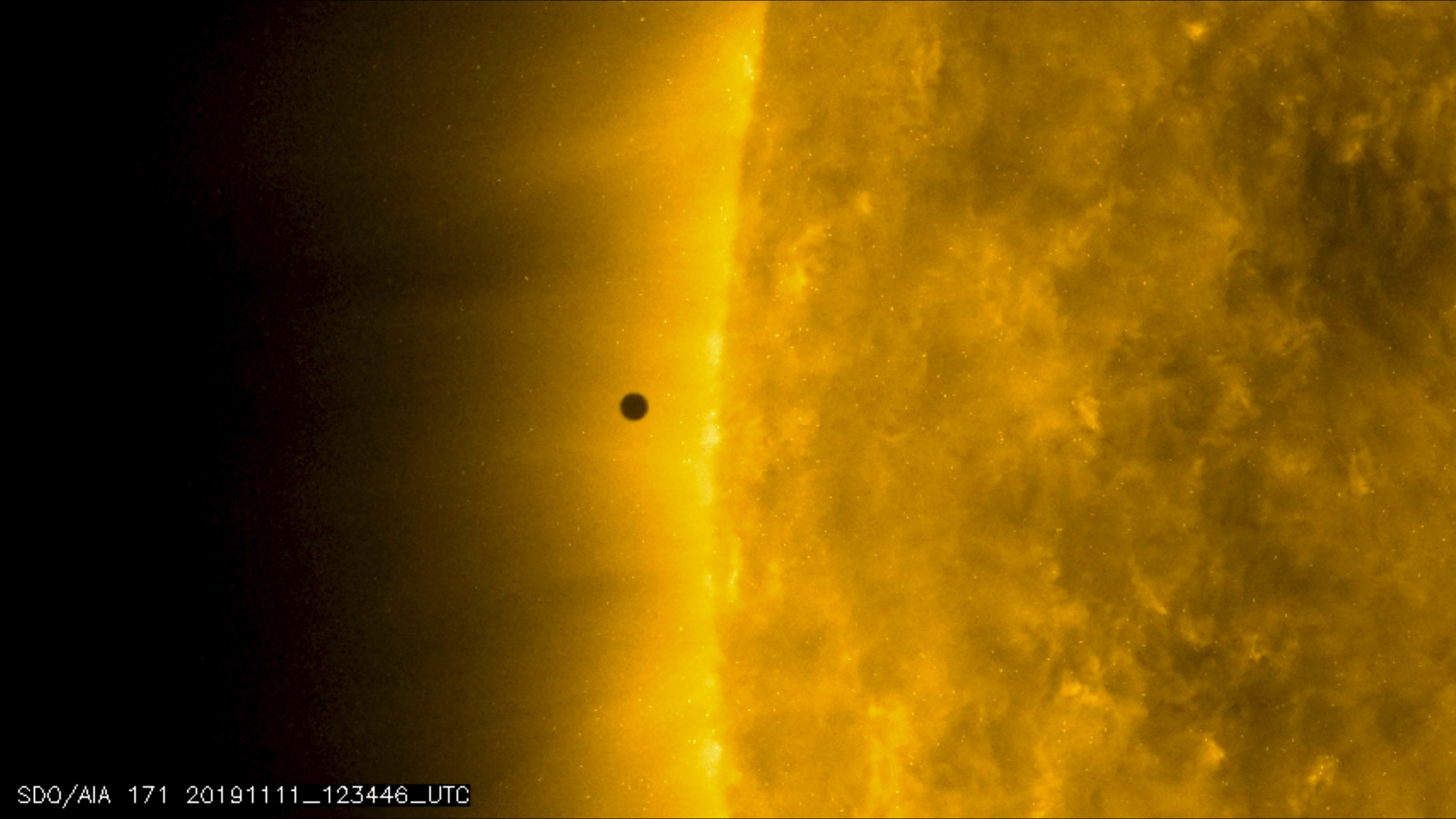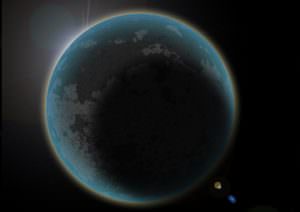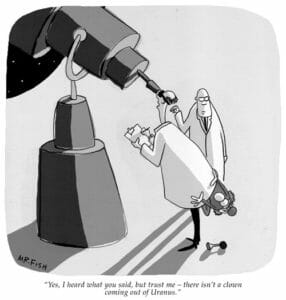Mini Mercury Glides Across Sun’s Vast Glare in Rare Transit
The next such event for the solar system's smallest, innermost planet isn't until 2032, and North America won't get another shot until 2049. This still image from video issued by NASA's Solar Dynamics Observatory shows Mercury, solar system's smallest, innermost planet, as a tiny black dot as it passes between Earth and the sun Monday. (NASA Solar Dynamics Observatory via AP)
This still image from video issued by NASA's Solar Dynamics Observatory shows Mercury, solar system's smallest, innermost planet, as a tiny black dot as it passes between Earth and the sun Monday. (NASA Solar Dynamics Observatory via AP)
CAPE CANAVERAL, Fla. — Mini Mercury skipped across the vast, glaring face of the sun Monday in a rare celestial transit.
Stargazers used solar-filtered binoculars and telescopes to spot Mercury — a tiny black dot — as it passed directly between Earth and the sun on Monday.
The eastern U.S. and Canada got the whole 5 ½-hour show, weather permitting, along with Central and South America. The rest of the world, except for Asia and Australia, got just a sampling.
Mercury is the solar system’s smallest, innermost planet. The next transit isn’t until 2032, and North America won’t get another shot until 2049.
In Maryland, clouds prevented NASA solar astrophysicist Alex Young from getting a clear peek. Live coverage was provided by observatories including NASA’s orbiting Solar Dynamics Observatory.
“It’s a bummer, but the whole event was still great,” Young wrote in an email. “Both getting to see it from space and sharing it with people all over the country and world.”
At Cape Canaveral, space buffs got a two-for-one. As Mercury’s silhouette graced the morning sun, SpaceX launched 60 small satellites for global internet service, part of the company’s growing Starlink constellation in orbit.
___
The Associated Press Health and Science Department receives support from the Howard Hughes Medical Institute’s Department of Science Education. The AP is solely responsible for all content.
Your support is crucial...As we navigate an uncertain 2025, with a new administration questioning press freedoms, the risks are clear: our ability to report freely is under threat.
Your tax-deductible donation enables us to dig deeper, delivering fearless investigative reporting and analysis that exposes the reality beneath the headlines — without compromise.
Now is the time to take action. Stand with our courageous journalists. Donate today to protect a free press, uphold democracy and uncover the stories that need to be told.






You need to be a supporter to comment.
There are currently no responses to this article.
Be the first to respond.